Arya CMS50D-BT Handleiding
Arya
Meetapparatuur
CMS50D-BT
Bekijk gratis de handleiding van Arya CMS50D-BT (3 pagina’s), behorend tot de categorie Meetapparatuur. Deze gids werd als nuttig beoordeeld door 57 mensen en kreeg gemiddeld 4.6 sterren uit 29 reviews. Heb je een vraag over Arya CMS50D-BT of wil je andere gebruikers van dit product iets vragen? Stel een vraag
Pagina 1/3

Instructions to User
Dear Users, thank you very much for purchasing our product.
This Manual is written and compiled in accordance with the
council directive IEC 60601-1、IEC 60601-1-11 and
ISO 80601-2-61 for medical devices and harmonized standards. In case of modifications and software upgrades,
the information contained in this document is subject to change without notice.
The Manual describes, in accordance with the Pulse Oximeter’s features and requirements, main structure,
functions, specifications, correct methods for transportation, installation, usage, operation, repair, maintenance and
storage, etc. as well as the safety procedures to protect both the user and equipment. Refer to the respective
chapters for details.
Please read the Manual very carefully before using this device. These instructions describe the operating
procedures to be followed strictly, failure to follow these instructions can cause measuring abnormality, equipment
damage and personal injury. The manufacturer is NOT responsible for the safety, reliability and performance issues
and any monitoring abnormality, personal injury and equipment damage due to user’s negligence of the operation
instructions. The manufacturer’s warranty service does not cover such faults.
Owing to the forthcoming renovation, the specific products you received may not be totally in accordance with the
description of this User Manual. We would sincerely regret for that.
The device is a medical device, and it can be used repeatedly.
Notice : Please read the Manual very carefully before using this device.
1 Safety
1.1 Instructions for safe operations
1) Inspect periodically, make sure that there is no visible damage that may affect patient’s safety and monitoring
performance about cables and transducers. It is recommended that the device should be inspected at least once a
week. Please stop using the device if there is obvious damage to the device
2) Necessary maintenance must be performed by qualified service engineers appointed by our company ONLY.
Users are not permitted to maintain the device by themselves.
3) The oximeter cannot be used together with devices not specified in User’s Manual. Only the accessory that is
appointed or recommendatory by manufacture can be used with this device.
4) The device has been calibrated before leaving factory.
1.2 Attentions
Keep the oximeter away from dust, vibration, corrosive substances, explosive materials, high temperature and
moisture.
If the device gets wet, please stop operating it.
When the device is carried from cold environment to warm or humid environment, please do not use it
immediately.
DO NOT operate switch on front panel with sharp materials.
High temperature or high pressure steam disinfection of the oximeter is not permitted. Refer to User Manual in
the relative chapter (6.1) for instructions of cleaning and disinfection.
Do not have the oximeter immerged in liquid. When it needs cleaning, please wipe its surface with medical
alcohol. Do not spray any liquid on the device directly.
When cleaning the device with water, the temperature should be lower than 60 ℃.
The fingers which are too thin or too cold may affect the measure accuracy, please insert the thicker finger such
as thumb or middle finger deeply enough into the probe.
Do not use the device on infant or neonatal patients.
The product is suitable for children above four years old and adults(Weight should be between 15 Kg to 110
Kg).
The device may not work for all patients. If you are unable to achieve stable readings, discontinue use.
The update period of data is less than 5 seconds, which is changeable according to different pulse rate values.
If some abnormal conditions appear on the screen during test process, pull out the finger and reinsert to
restore normal use.
The device has useful life for three years.
The lanyard is made of insensitive material, please don't use it if any person is extra sensitive to lanyard. And
do not wrap the lanyard around neck to avoid an accident.
The device hasn't low-voltage alarm function, it only shows the low-voltage, please change the battery when the
battery voltage is used up.
The device hasn’t the alarm function of exceeding limits, do not use it in situations where alarms are required
The maximum temperature for the contact surface of the device with the body is less than 41 ℃, and the
temperature is measured by a temperature measuring device.
Batteries must be removed if the device is going to be stored for more than one month, or else batteries may
leak.
Do not twist or pull on the connection circuit.
1.3 Warnings
Warning :
1) Explosive hazard—DO NOT use the device in environment with inflammable gas such as some ignitable
anesthetic agents.
2) DO NOT use the device while the testee is being scanned by MRI or CT.
3) In optical treatment, please follow doctor requirement to use the device.
4) DO NOT strand the lanyard in order to avoid device drop and damage. The lanyard is made of insensitive
material. Please do not use it if any person is allergic to lanyard. Do not wrap the lanyard around neck to avoid
an accident.
5) The person who is allergic to rubber can not use this device.
6) The disposal of scrap device and its accessories and packing(including battery, plastic bags, foams and paper
boxes) should follow the local laws and regulations.
7) Please check the packing before use to make sure the device and accessories are totally in accordance with the
packing list, or else the device may have the possibility of working abnormally.
8) Please don't measure this device with function tester for the device's related information.
9) The uncomfortable or painful feeling may appear if using the device ceaselessly, especially for the
microcirculation barrier patients. It is recommended that the sensor should not be applied to the same finger for
over 2 hours.
10) The SpO2 probe can not be clipped on the edema and tender tissue.
11) The infrared is harmful to eyes, so the user and the maintenance man should not stare at the light part of the
SpO2 probe (the infrared is invisible).
12) Testee can not use enamel or other makeup.
13) The fingernails of the testee should not be too long.
14) For the details of correlative clinic restriction and contraindications, please refer to the related medical
literatures.
15) The device is not intended for treatment.
16) The device is a medical device, and it can be used repeatedly.
1.4 Attention for operation
a. Please check the device before using, and confirm that it can work normally.
b. The finger should be placed properly (see the attached illustration of this manual, Figure 1), or else it may cause
inaccurate measurement.
c. The SpO2 sensor and photoelectric receiving tube should be arranged in a way with the subject’s arteriole in a
position there between.
d. The SpO2 sensor should not be used at a location or limb tied with arterial canal or blood pressure cuff or
receiving intravenous injection.
e. Make sure the optical path is free from any optical obstacles like rubberized fabric.
f. Excessive ambient light may affect the measurement result. It includes fluorescent lamp, dual ruby light,
infrared heater, direct sunlight and etc.
g. Strenuous action of the subject or extreme electrosurgical interference may also affect the accuracy.
h. Testee can not use enamel or other makeup.
i. Please clean and disinfect the device after operating according to the User Manual (6.1.1)
j. The Pedometer should be worn on the waist, and fixed well.
1.5 Clinical restrictions
1. As the measure is taken on the basis of arteriole pulse, substantial pulsating blood flow of subject is required.
For a subject with weak pulse due to shock, low ambient/body temperature, major bleeding, or use of vascular
contracting drug, the SpO
2 waveform (PLETH) will decrease. In this case, the measurement will be more
sensitive to interference.
2. For those with a substantial amount of staining dilution drug (such as methylene blue, indigo green and acid
indigo blue), or carbon monoxide hemoglobin (COHb), or methionine (Me+Hb) or thiosalicylic hemoglobin,
and some with icterus problem, the SpO
2 determination by this monitor may be inaccurate.
3. The drugs like dopamine, procaine, prilocaine, lidocaine and butacaine may also be a major factor blamed for
serious error of SpO2 measure.
4. As the SpO2 value serves as a reference value for judgement of anemic anoxia and toxic anoxia, some patients
with serious anemia may also report good SpO
2 measurement.
Notice
The product is not suitable for use in continuous supervision for patients.
The problem of overrating would emerge when the patient is suffering from toxicosis which caused by
carbon monoxide, the device is not recommended to be used under this circumstance.
2 Principle
2.1 Operation principle for Pulse Oximeter
Figure 1 Operating principle
Principle of the Oximeter is as below: An experience formula of data process is established taking use of Lambert
Beer Law according to Spectrum Absorption Characteristics of Reductive Hemoglobin (Hb) and Oxyhemoglobin
(HbO2) in glow & near-infrared zones. Operation principle of the instrument is: Photoelectric Oxyhemoglobin
Inspection Technology is adopted in accordance with Capacity Pulse Scanning & Recording Technology, so that
two beams of different wavelength of lights can be focused onto human nail tip through perspective clamp
finger-type sensor. Then measured signal can be obtained by a photosensitive element, information acquired
through which will be shown on screen through treatment in electronic circuits and microprocessor.
2.2 Operation principle for Pedometer
The Pedometer, basing on counting steps by acceleration sensor, adopts the recognition principle of pace waveform
and its acceleration and deceleration process for recognizing the waveform produced by person walking, finally
gets the number of steps. Detailed method: use the acceleration sensor to collect user’s steps(more than three steps),
via analyzing and calculating, obtain the peak value of step vibration waveform and the average value of
acceleration difference value, and set it to the threshold value. Collect the user’s actual step waveform data, if it is
in the threshold range, then it is considered that user walks one step forward.
3 Technical specifications
3.1 Main performance
1) Display of SpO2 value.
2) Display of pulse rate and bar graph.
3) Low-battery indication.
4) Storage function of SpO
2 and pulse rate value
5) Sync time function.
6) Display of steps, calorie and time.
7) The pedometer can store data
8) Display direction can be changed automatically.
9) Height, weight and target calorie can be set by the server.
10) Extra low-power consumption setting.
11) The device will automatically enter to blank screen state when there is no operation for one minute.
12) The data stored can be uploaded to APP by Bluetooth, APP will upload the data to CLOUD platform for
analyzing.
3.2 Main Parameters
1. SpO2 measurement range: 0 %~100 %
Accuracy: 70 %~100 %: ±2 %
0 %~69 %: unspecified
2. PR measurement range: 30 bpm~250 bpm
Accuracy: ±2 bpm or ±2 %, whichever is greater.
3. Resolution:
SpO2: 1 %
PR: 1 bpm
4. Measurement Performance in Weak Filling Condition: SpO
2 and pulse rate can be shown
correctly when pulse-filling ratio is 0.4 %. SpO
2 error is ±4 %, pulse rate error is ±2 bpm or ±2 %, whichever is
greater.
5. Resistance to surrounding light: The deviation between the value measured in the condition
of man-made light or indoor natural light and that of darkroom is less than ±1 %.
6. Pedometer measurement:
Measurement range: 0~65535 steps
Resolution: one step
7. Memory function: record 1000 groups of SpO2 data, 224-day pedometer data.
8. Working voltage: DC 3 V
9. Optical Sensor: red light (wavelength is 660 nm,6.65 mW) Infrared (wavelength is 880 nm, 6.75 mW)
3.3 Environment requirements
Storage Environment
a)Temperature: -40 ~℃ ℃ +60
b)Relative humidity: ≤95 %
c)Atmospheric pressure: 500 hPa~1060 hPa
Operating Environment
a)Temperature: 10 ~℃ ℃ 40
b)Relative humidity: ≤75 %
c)Atmospheric pressure: 700 hPa~ 1060 hPa
4 Device introduction
4.1 Appearance introduction
Button
Screen
Battery compartment

Figure 2 Sketch map for Pulse Oximeter
4.2 Interface introduction
4.3 Parameter introduction
Parameter Description Unit
%SpO2 Oxygen saturation %
PRbpm Pulse rate bpm
Calorie Calorie Calorie
Steps Step Step
5 Operation guide
5.1 Installation of batteries
Figure 5 Figure 6 Figure 7
1) Open the battery compartment cover on the back of the device, shown as Figure 5.
2) Install the two “AAA” Alkali batteries, pay attention to the polarity, shown as Figure 6..
3) Install the battery compartment, shown as Figure 7.
Notice
Please make sure the batteries polarities are installed properly, to avoid any damage to the device.
Please take out the batteries if the device is not used for a long time.
Please replace the batteries in time when low-battery appears.
Please replace two new batteries with same type at the same time.
After replacing batteries, perform sync time with APP again.
Notice
Disposal of scrap batteries should follow local regulations about environment.
5.2 Data measurement
1) Install the two “AAA” batteries properly, then the device will turn on automatically and enter to
“Synchronous Time...” interface.
Figure 8 Synchronous time interface
Notice
In “Synchronous Time...” interface, Bluetooth will be turned on automatically.
2) Three methods to exit from “Synchronous Time...” interface.
Notice
Before each measurement, make sure the device has been performed sync time, to insure accurate time for
storing data. It indicates that the device needs to perform sync time when it displays “Synchronous
Time...”, otherwise it will not store measurement results.
The first method:
Don’t perform sync time, press the button, then the device will enter to “Steps” interface from “Synchronous
Time...” interface.
The second method:
Don’t perform sync time, wait for several minutes, then the device will enter to “Steps” interface from
“Synchronous Time...” interface.
The third method:
Perform sync time, connect to power, then the device will turn on automatically, when it enters to “Synchronous
Time...” interface, connect it with App, then it will automatically adjust time.
3) In “Steps” interface, insert the finger to the probe (fully insert), then the device will automatically enter to
“SpO
2” interface from “Steps” interface, shown as Figure 3.
Notice
If the time is wrong, the device will not store data.
Fingernails and the luminescent tube should be on the same side.
During using, the testee’s finger should not shake, and keep quiet.
4) Read SpO2 and pulse rate value directly from the screen after inserting the finger for about 4~8 s, shown as
Figure 3. Pull out the finger after stable data appears to finish data storing. Only one result is stored from
each inserting to pulling out the finger.
5) In SpO2
state, screen direction can be changed automatically.
6) The interface between “Steps” and “SpO2” interface can be switched by inserting the finger.
a. In “Steps” interface, insert the finger to enter to “SpO2” interface.
b. In “SpO
2” interface, pull out the finger to enter to “Steps” interface, shown as Figure
Notice
In “Steps” interface, Bluetooth will be in “ON” state all the time.
7) In “Steps” interface for 1 minute, it will automatically enter standby mode.
Notice
In standby mode, the screen does not display any contents, but the pedometer can work normally.
In standby mode, Bluetooth is in “OFF” state.
8) In standby mode, press Button to turn on screen display and enter to “Steps” interface shown as Figure 4.
5.3 Data upload
The device can transmit SpO
2, pulse rate, Steps and calorie value to phone-side by wireless mode.
User can add the device by searching it in PC-side, as each device has the unique code which is marked in the
device enclosure, which provides convenience for user to upload the results to PC, avoids confusion caused by
excessive and same devices. After measuring, the device will automatically connect to the PC communicated with
it last time.
In “STEPS” interface, Bluetooth is in “ON” state, and it is in “OFF” state in other interfaces.
Notice
Before uploading steps data, please do sports for 5 minutes at least.
The Pedometer can only upload the data(measured in the last day) on the next day.
5.4 Accessories
A. A lanyard
B. Two batteries(optional)
C. A User Manual
D. A SpO2 package
6 Maintenance
6.1 Routine maintenance
6.1.1 Cleaning and disinfecting
Turn off the device before cleaning. Use medical ethanol to clean and disinfect the device, natural air-drying or
clean it with a clean and dry cloth. Avoid any liquid entering to the device.
6.1.2 Maintenance
1) Keep the device away from dust, high temperature and humidity, and avoid strong shaking and hitting.
2) When the device needs to clean, please wipe its surface with neutral detergent, avoid using strong corrosive
liquid, like alcohol and gasoline, etc.
3) Please clean and disinfect the device before using according to the User Manual (6.1.1).
4) Please replace the batteries in time when low-battery appears.
5) Please take out the batteries if the device is not used for a long time.
6) The device needs to be calibrated periodically (or according to the calibrating program of hospital). It also
can be performed at the state-appointed agent or just contact us for calibration.
6.2 Transportation and storage
A. The packed device can be transported by ordinary conveyance or according to transport contract. The device
can not be transported mixed with toxic, harmful, corrosive material.
B. The packed device should be stored in room with no corrosive gases and good ventilation. Temperature:
-40 °C~60 °C; Relative Humidity: ≤95 %; Atmospheric pressure: 500 hPa~1060 hPa
7 Troubleshooting
Trouble Analysis of cause Solution
The SpO2 or
Pulse Rate can
not be
displayed
normally
1) The finger is not properly inserted.
2) The SpO2 value of patient is too low to be
detected.
1) Insert the finger properly and try
again.
2) Please try several times more; Go to a
hospital for a diagnosis if you are sure
the device works all right.
The SpO2 or
Pulse Rate are
not displayed
stably
1) The finger is not inserted inside deep
enough.
2) The finger is shaking or the patient is
moving.
1) Insert the finger properly and try
again.
2) Please do not move.
The device can
not be turned
on
1) The batteries are drained or almost
drained.
2) The batteries are installed improperly.
3) The device’s malfunction.
1) Please replace the batteries.
2) Please install the batteries again.
3) Please contact the local service center.
The display
disappears
suddenly
1) Low voltage
2) The device enters to standby mode
automatically if there is no operation for 1
minute.
1) Please change the batteries.
2) Normal.
Data can not be
stored.
1) False time.
2) Measurement time is too short.
1) Sync time.
2) Normal.
8 Meaning of Symbol
Symbol Meaning
Warning – refer to User Manual
Refer to instruction manual/booklet
%SpO2 The pulse oxygen saturation(%)
PRbpm Pulse rate(bpm)
Calorie Calorie
Low-voltage
Battery anode
Battery cathode
IP22 Ingress of liquids rank
Type BF applied part
9 Specification
Display Information Display Mode
The Pulse Oxygen Saturation(SpO
2) 2-digit digital OLED display
Pulse Rate(PR) 3-digit digital OLED display
Pulse Intensity(bar-graph) bar-graph OLED display
Calorie 5-digit digital OLED display
Steps 5-digit digital OLED display
Time Year-month-day hour-minute OLED display
SpO2 parameter
Measurement range 0 %~99 % (resolution: 1 %)
Pulse parameter
Measurement range 30 bpm~250 bpm (resolution: 1 bpm)
Pedometer
Measurement range 0~65535 steps (resolution: one step)
Safety classification Internally powered equipment, type BF applied part
Pulse Intensity
Range Continuous bar-graph display, the higher display indicates the
stronger pulse.
Power supply
Two “AAA” batteries
Dimension and weight
Dimension 58 mm(L) x 32 mm(W) x 34 mm(H)
Weight About 52 g (including batteries)

§ 15.19 Labeling requirements.
This device complies with part 15 of the FCC Rules. Operation is subject to the following two conditions: (1) This
device may not cause harmful interference, and (2) this device must accept any interference received, including
interference that may cause undesired operation.
§ 15.21 Information to user.
Any Changes or modifications not expressly approved by the party responsible for compliance could void the
user's authority to operate the equipment.
§ 15.105 Information to the user.
Note: This equipment has been tested and found to comply with the limits for a Class B digital device, pursuant to
part 15 of the FCC Rules. These limits are designed to provide reasonable protection against harmful interference
in a residential installation. This equipment generates uses and can radiate radio frequency energy and, if not
installed and used in accordance with the instructions, may cause harmful interference to radio communications.
However, there is no guarantee that interference will not occur in a particular installation. If this equipment does
cause harmful interference to radio or television reception, which can be determined by turning the equipment off
and on, the user is encouraged to try to correct the interference by one or more of the following measures:
-Reorient or relocate the receiving antenna.
-Increase the separation between the equipment and receiver.
-Connect the equipment into an outlet on a circuit different from that to which the receiver is connected.
-Consult the dealer or an experienced radio/TV technician for help.
The device has been evaluated to meet general RF exposure requirement. The device can be used in portable
exposure condition without restriction.
Product specificaties
| Merk: | Arya |
| Categorie: | Meetapparatuur |
| Model: | CMS50D-BT |
| Kleur van het product: | Blauw |
| Breedte: | 57 mm |
| Diepte: | 34 mm |
| Hoogte: | 31 mm |
| Breedte verpakking: | 52 mm |
| Diepte verpakking: | 78 mm |
| Hoogte verpakking: | 40 mm |
| Beeldscherm: | LCD |
| Type stroombron: | Batterij/Accu |
| Ondersteund aantal accu's/batterijen: | 2 |
| Temperatuur bij opslag: | -40 - 60 °C |
| Luchtvochtigheid bij opslag: | 0 - 95 procent |
| Type batterij: | AAA |
| Meetbereik zuurstofverzadiging: | 0 - 100 procent |
| Polsslagmeetbereik: | 30 - 250 bpm |
Heb je hulp nodig?
Als je hulp nodig hebt met Arya CMS50D-BT stel dan hieronder een vraag en andere gebruikers zullen je antwoorden
Handleiding Meetapparatuur Arya

15 Mei 2023
Handleiding Meetapparatuur
- Vigor
- CESYS
- VirtuFit
- Entes
- Emko
- Phoenix Contact
- Cablexpert
- Perel
- Silverline
- Testboy
- Hager
- Qualita
- MGL Avionics
- Janitza
- Uni-T
Nieuwste handleidingen voor Meetapparatuur
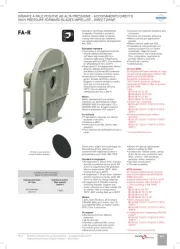
16 September 2025
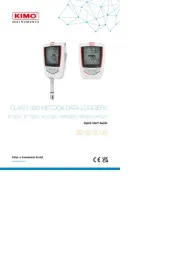
16 September 2025
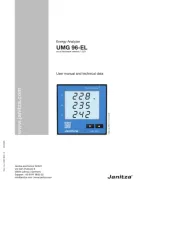
16 September 2025
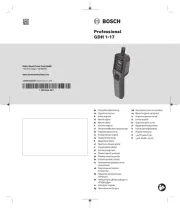
15 September 2025
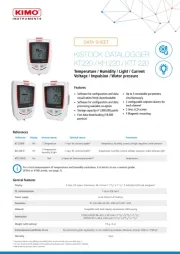
15 September 2025
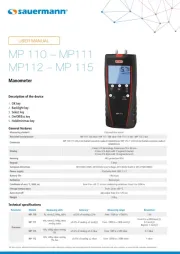
15 September 2025
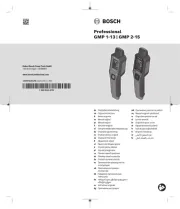
15 September 2025
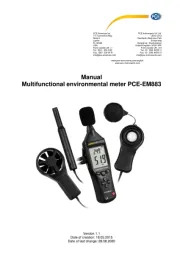
15 September 2025
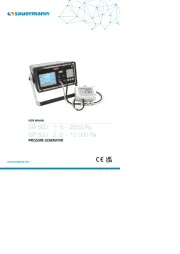
15 September 2025
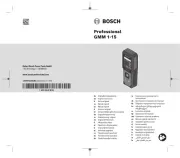
15 September 2025